- Raspberries growth and development
- Growth stages
- Development factors
- Conclusion
- Factors Affecting Raspberry Plant Growth
- 1. Soil and Site Selection:
- 2. Watering:
- 3. Fertilization:
- 4. Pruning and Training:
- 5. Pest and Disease Control:
- 6. Mulching:
- 7. Winter Protection:
- 8. Pollination:
- The importance of pruning raspberries
- Reasons to prune raspberries
- When to prune raspberries
- How to prune raspberries
- Essential nutrients for raspberry plants
- Preventing common pests and diseases in raspberries
- Pest prevention
- Disease prevention
- Watering and fertilizing raspberries
- Watering:
- Fertilizing:
- Tips for watering raspberry plants
- 1. Watering frequency:
- 2. Watering technique:
- 3. Time of day:
- 4. Mulching:
- 5. Monitoring soil moisture:
- Best fertilizers for raspberry bushes
- Harvesting and storing raspberries
- Picking ripe and sweet raspberries
- 1. Look for vibrant color
- 2. Check the firmness
- 3. Give it a gentle tug
- 4. Mind the weather
- 5. Pick regularly
- 6. Use a gentle touch
- 7. Enjoy immediately or store properly
- Question-answer:
- How often should I water raspberry bushes during fruiting?
- Is it necessary to fertilize raspberry bushes during the fruiting period?
- What should I do if my raspberry bushes have powdery mildew during fruiting?
- Can I prune raspberry bushes during the fruiting season?
- What are the common pests that can affect raspberry bushes during fruiting?
- How long does it take for raspberries to ripen after flowering?
- Why are my raspberry bushes not producing fruit during the fruiting season?
- Video: How to Prune Raspberries for BIGGER Harvests!
When raspberry bushes start producing fruit, it’s a thrilling time for gardeners. The anticipation of juicy, plump berries is enough to make anyone’s mouth water. However, it’s important to remember that this is a crucial time for the raspberry bush as well. Proper care and attention are necessary to ensure a bountiful harvest and maintain the health of the plant.
One of the most important things to remember when caring for raspberry bushes during fruiting is watering. Raspberries have shallow roots, so it’s important to regularly water them to keep the soil moist. However, over-watering can lead to root rot and other problems, so it’s crucial to find the right balance. A good rule of thumb is to water deeply once or twice a week, depending on the weather and soil conditions.
In addition to watering, raspberry bushes also need regular fertilization during the fruiting period. A balanced fertilizer with equal amounts of nitrogen, phosphorus, and potassium is ideal. Fertilizing once every three to four weeks will provide the bush with the nutrients it needs to produce healthy, delicious berries.
Finally, proper pruning is essential for raspberry bushes during fruiting. Removing dead or damaged canes will help improve air circulation and reduce the risk of diseases. Pruning can also help maintain the shape and size of the plant, making it easier to harvest the fruit. It’s best to prune after harvesting to encourage new growth for the following year.
Raspberries growth and development
Raspberries are perennial plants that belong to the Rosaceae family. They grow in a bush-like form and produce delicious berries that are enjoyed by many people around the world. Understanding the growth and development stages of raspberries is essential for proper care and maintenance of these plants.
Growth stages
Raspberries go through several stages of growth, each with its specific characteristics:
- Vegetative stage: During this stage, the focus is on leaf and stem development. The plant puts all its energy into growing a strong root system and establishing a healthy framework to support future fruit production.
- Flowering stage: As the plant matures, it enters the flowering stage. This is when the raspberry bush produces clusters of small, white flowers. These flowers are essential for pollination and the subsequent development of fruit.
- Fruit development stage: Once pollination occurs, the flowers begin to transform into small green berries. Over time, these berries grow and ripen, changing color from green to red (or other varieties). This stage requires proper care and attention to ensure the best fruit quality and quantity.
Development factors
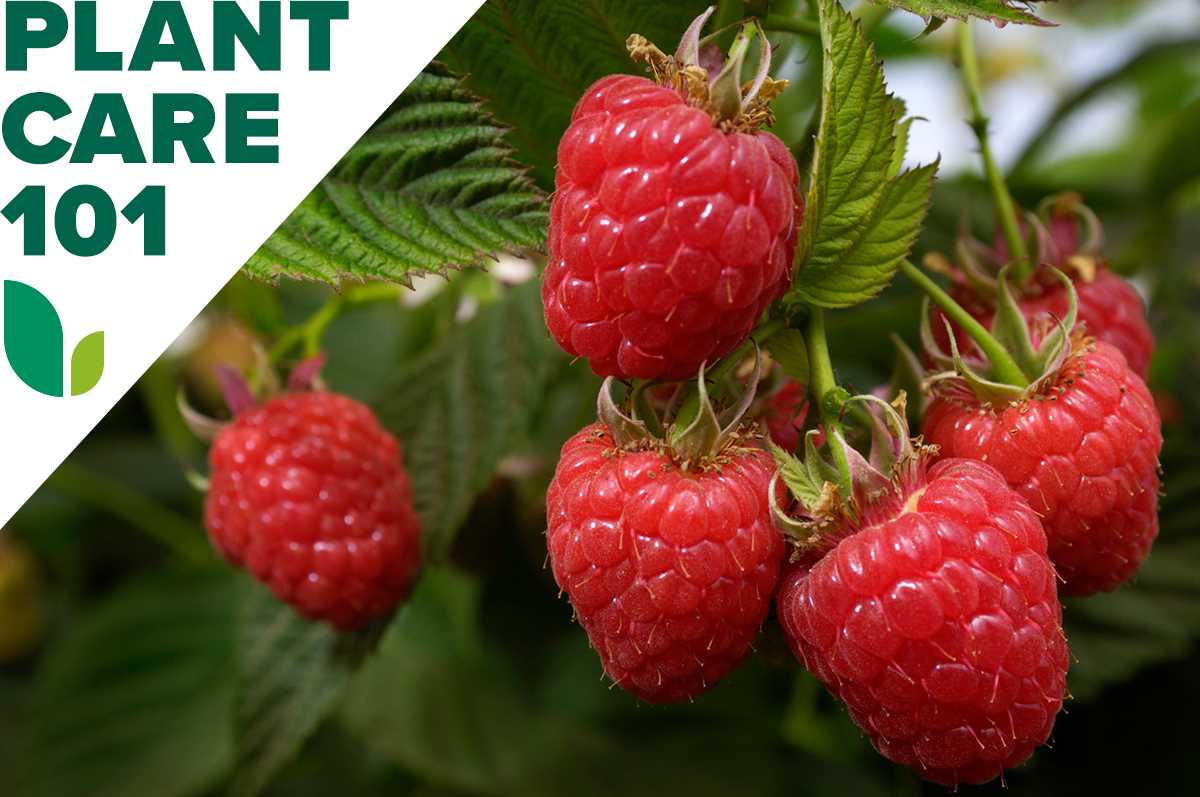
Several factors can influence the growth and development of raspberries:
- Temperature: Raspberries thrive in moderate temperatures, typically between 15-25°C (59-77°F). Extreme heat or cold can affect plant growth and fruit quality.
- Light: Raspberries require a significant amount of sunlight to produce sweet and juicy berries. Aim for a minimum of 6-8 hours of direct sunlight per day.
- Water: Adequate watering is crucial, especially during the fruit development stage. Raspberries prefer well-drained soil that is consistently moist but not waterlogged.
- Nutrients: Regular fertilization with balanced nutrients is necessary for optimal growth and fruit production. Apply a slow-release fertilizer in early spring and monitor the plant’s nutrient needs throughout the growing season.
- Pollination: Raspberries are typically self-pollinating, but cross-pollination can result in better fruit production. Consider planting different varieties of raspberries nearby to enhance pollination.
Conclusion
Raspberries undergo a series of growth and development stages, starting from vegetative growth to flowering and fruit development. By providing the right conditions, including proper temperature, sunlight, water, nutrients, and pollination, you can ensure the successful growth of raspberries and enjoy a bountiful harvest of delicious berries.
Factors Affecting Raspberry Plant Growth
Growing healthy raspberry plants requires proper care and attention to various factors that can affect their growth and productivity. Here are some key factors that can significantly influence the growth of raspberry plants:
1. Soil and Site Selection:
The quality of the soil and the selection of the planting site play a crucial role in the growth of raspberry plants. Raspberries prefer well-draining soil that is rich in organic matter. The soil pH should be between 5.5 and 6.5 for optimal growth. The site should have good air circulation and receive at least six hours of direct sunlight daily.
2. Watering:
Regular and consistent watering is vital for the growth of raspberry plants. During the growing season, they need about 1-2 inches of water per week. However, it’s important to avoid overwatering, as it can lead to root rot and other diseases. Watering in the morning is ideal to allow the leaves to dry before evening.
3. Fertilization:
Proper fertilization is necessary to provide raspberry plants with essential nutrients for growth. Before planting, it’s recommended to do a soil test to determine the nutrient levels and adjust accordingly. Organic matter, such as compost or well-rotted manure, can be added to improve soil fertility. Additionally, applying a balanced fertilizer during the growing season can help supplement any nutrient deficiencies.
4. Pruning and Training:
Pruning and training raspberry plants are essential for maintaining their health and optimizing yield. Regular pruning helps remove dead or diseased canes and improves airflow, reducing the risk of fungal infections. Training the canes on a trellis or support system helps keep the plants upright, making harvesting easier and increasing sunlight exposure.
5. Pest and Disease Control:
Raspberry plants are susceptible to various pests and diseases, including aphids, spider mites, powdery mildew, and raspberry cane borers. Regular monitoring and timely intervention are crucial for preventing and managing these issues. Using organic pest control methods and practicing good sanitation can help minimize the risk of infestation or disease outbreak.
6. Mulching:
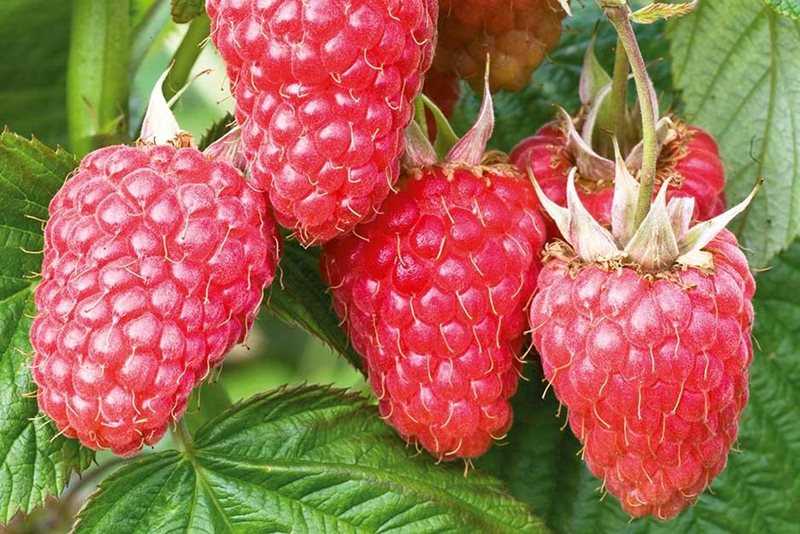
Applying a layer of mulch around the base of raspberry plants helps conserve moisture, suppress weeds, and maintain more stable soil temperatures. Organic mulch, such as straw or wood chips, is beneficial as it breaks down over time, adding organic matter to the soil.
7. Winter Protection:
Raspberry plants need protection from extreme cold temperatures during winter. Insulating the bases of the plants with a layer of mulch or straw helps protect the roots from freezing. Additionally, pruning and removing any dead or damaged canes before winter can help reduce the risk of disease and promote healthier growth in the following season.
8. Pollination:
Raspberry plants require proper pollination to set fruit. Bees and other pollinators play a crucial role in this process. To attract pollinators, it’s beneficial to have a diverse range of flowering plants nearby and avoid using harmful pesticides that can harm bees.
By considering and addressing these factors, raspberry plant growth can be optimized, resulting in healthy plants and a bountiful harvest.
The importance of pruning raspberries
Pruning is one of the most important tasks when it comes to maintaining healthy and productive raspberry bushes. It helps to improve air circulation, increase sunlight exposure, and control the growth of the plant. Regular pruning also prevents the spread of diseases and pests, resulting in better quality fruits.
Reasons to prune raspberries
- Remove old canes: Raspberry bushes produce canes that only live for two years. Pruning helps to remove the older canes, making room for new growth and improving fruit production.
- Promote new growth: Pruning encourages the development of new canes, which are more productive and healthier. This leads to a higher yield of delicious raspberries.
- Control size and shape: By pruning, you can control the size and shape of your raspberry bushes. This is particularly important for maintaining an organized and visually appealing garden.
- Prevent diseases and pests: Pruning removes infected or damaged canes, reducing the risk of diseases and pests from spreading to healthy parts of the plant.
When to prune raspberries
The timing of pruning raspberries depends on the variety and the climate in your region, but generally, it is recommended to prune in late winter or early spring before new growth begins. Pruning during this time allows the plants to focus their energy on producing new canes and fruits.
How to prune raspberries
Here are some general guidelines for pruning raspberries:
- Remove dead and damaged canes: Start by cutting out any dead, diseased, or broken canes at ground level. Dispose of these canes away from your garden to prevent the spread of diseases.
- Thin out crowded canes: Thin out the remaining canes by cutting out weaker or overcrowded canes. Aim to have about 4-6 strong and healthy canes per square foot.
- Prune lateral branches: Shorten the lateral branches to about 8-12 inches long. This allows better air circulation and sunlight penetration, promoting the development of healthy fruits.
- Cleanup: Finally, remove any debris or pruning waste from the area and dispose of it properly.
Remember to wear gloves and use sharp and clean pruning shears for the best results. Regular pruning, along with proper care and maintenance, will ensure your raspberry bushes produce abundant and delicious fruits year after year.
Essential nutrients for raspberry plants
Raspberry plants, like any other plant, require essential nutrients to grow and thrive. These nutrients are necessary for the plant to perform important functions such as photosynthesis, root development, and fruit production. Below are some of the essential nutrients that raspberry plants need:
- Nitrogen: Nitrogen is vital for the overall growth and development of raspberry plants. It helps in the production of chlorophyll, which is necessary for photosynthesis. Nitrogen is also responsible for the growth of leaves and stems.
- Phosphorus: Phosphorus plays a crucial role in stimulating root development and promoting flower and fruit formation in raspberry plants. It also aids in the transfer of energy within the plant.
- Potassium: Potassium is essential for the overall functioning of raspberry plants. It helps in the regulation of water movement, improves disease resistance, and enhances the quality of fruits.
- Calcium: Calcium is important for maintaining the structural integrity of raspberry plants. It helps in cell wall formation, promotes root growth, and prevents diseases.
- Magnesium: Magnesium is necessary for the production of chlorophyll and plays a vital role in photosynthesis. It also helps in enzyme activation and nutrient transportation within the raspberry plant.
In addition to these macronutrients, raspberry plants also require micronutrients in smaller quantities. These include iron, manganese, zinc, copper, boron, and molybdenum. These micronutrients are essential for various biochemical processes and enzyme activities within the plant.
It’s important to ensure that raspberry plants receive a balanced supply of these essential nutrients. Soil testing can help identify any nutrient deficiencies or imbalances and guide the application of appropriate fertilizers or soil amendments. Regular monitoring and timely nutrient supplementation can help ensure the health and productivity of raspberry plants.
Preventing common pests and diseases in raspberries
Growing raspberries can be rewarding, but it’s important to take steps to prevent common pests and diseases that can affect your plants. By following these tips, you can help ensure a healthy and thriving raspberry crop.
Pest prevention
- Aphids: Aphids can be a common problem in raspberries. To prevent infestations, regularly inspect your plants and remove any aphids you find. You can also introduce natural predators, such as ladybugs, to help control aphid populations.
- Spider mites: Spider mites can cause damage to raspberries by sucking the sap from the leaves. To prevent infestations, make sure to keep the area around your raspberries clean and free from weeds. Additionally, you can spray a mixture of water and insecticidal soap on the plants to deter spider mites.
- Japanese beetles: Japanese beetles can feed on raspberry leaves and fruit, causing significant damage. One way to prevent infestations is to handpick the beetles and drop them into a bucket of soapy water. Applying an insecticide specifically formulated for Japanese beetles can also be effective.
- Raspberry crown borer: The raspberry crown borer is an insect that can cause major damage to raspberry plants. To prevent infestations, regularly inspect the base of your raspberry plants for any signs of entry holes or sawdust-like frass. If you find any, prune and destroy the affected canes.
Disease prevention
- Anthracnose: Anthracnose is a fungal disease that can affect raspberries. To prevent infection, make sure to provide adequate air circulation around your raspberry plants by pruning and thinning the canes. It’s also important to remove and destroy any infected canes or fruit that you find.
- Gray mold: Gray mold, caused by the fungus Botrytis cinerea, can impact raspberries. To prevent this disease, avoid overcrowding your plants and make sure they have plenty of space to grow. Good air circulation and proper watering techniques can also help prevent the development of gray mold.
- Powdery mildew: Powdery mildew is a common fungal disease that can affect raspberries. To prevent infection, make sure to provide adequate spacing between your raspberry plants to allow for good air circulation. Regularly remove and destroy any infected leaves or canes that you find.
- Cane blight: Cane blight is a fungal disease that can cause wilting and dieback in raspberry canes. To prevent infection, regularly inspect your canes for any signs of blight and remove and destroy any infected canes. Proper pruning techniques and keeping the area around your raspberries clean can also help prevent cane blight.
By following these pest and disease prevention tips, you can help ensure that your raspberry plants stay healthy and produce a bountiful harvest.
Watering and fertilizing raspberries
Raspberries need regular watering to thrive and produce a bountiful harvest. Adequate moisture is especially important during the fruiting stage to ensure the berries develop properly. Here are some tips on watering and fertilizing your raspberry bush:
Watering:
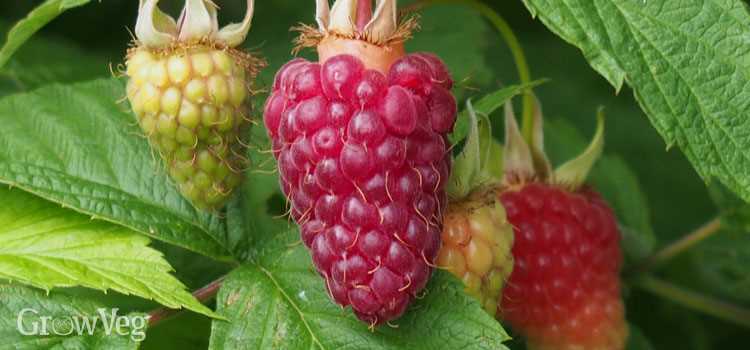
- Water your raspberry bush deeply and consistently, especially during dry spells or hot weather.
- Aim to provide around 1-1.5 inches of water per week, either through rainfall or irrigation.
- Apply water directly to the base of the plant, avoiding wetting the leaves as this can increase the risk of disease.
- Consider using a drip irrigation system or soaker hose to provide slow, deep watering.
Fertilizing:
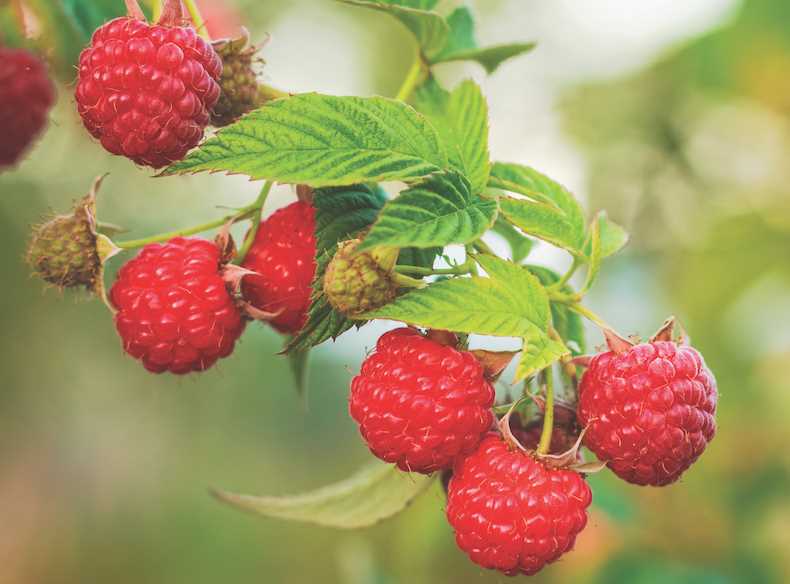
- Before planting raspberries, incorporate well-rotted compost or aged manure into the soil to improve fertility.
- Apply a balanced fertilizer, such as a 10-10-10 or 14-14-14, in early spring before new growth begins.
- Follow the package instructions for the correct application rate, usually around 1 pound of fertilizer per 100 square feet of planting area.
- Avoid applying excessive nitrogen fertilizer, as this can lead to lush, vegetative growth at the expense of fruit production.
- Consider using organic fertilizers, such as fish emulsion or seaweed extract, which provide slow-release nutrients to the plants.
Remember to regularly monitor the moisture levels of the soil and adjust your watering schedule accordingly. Additionally, a layer of organic mulch around the base of the raspberry bush can help conserve moisture and suppress weeds.
Tips for watering raspberry plants
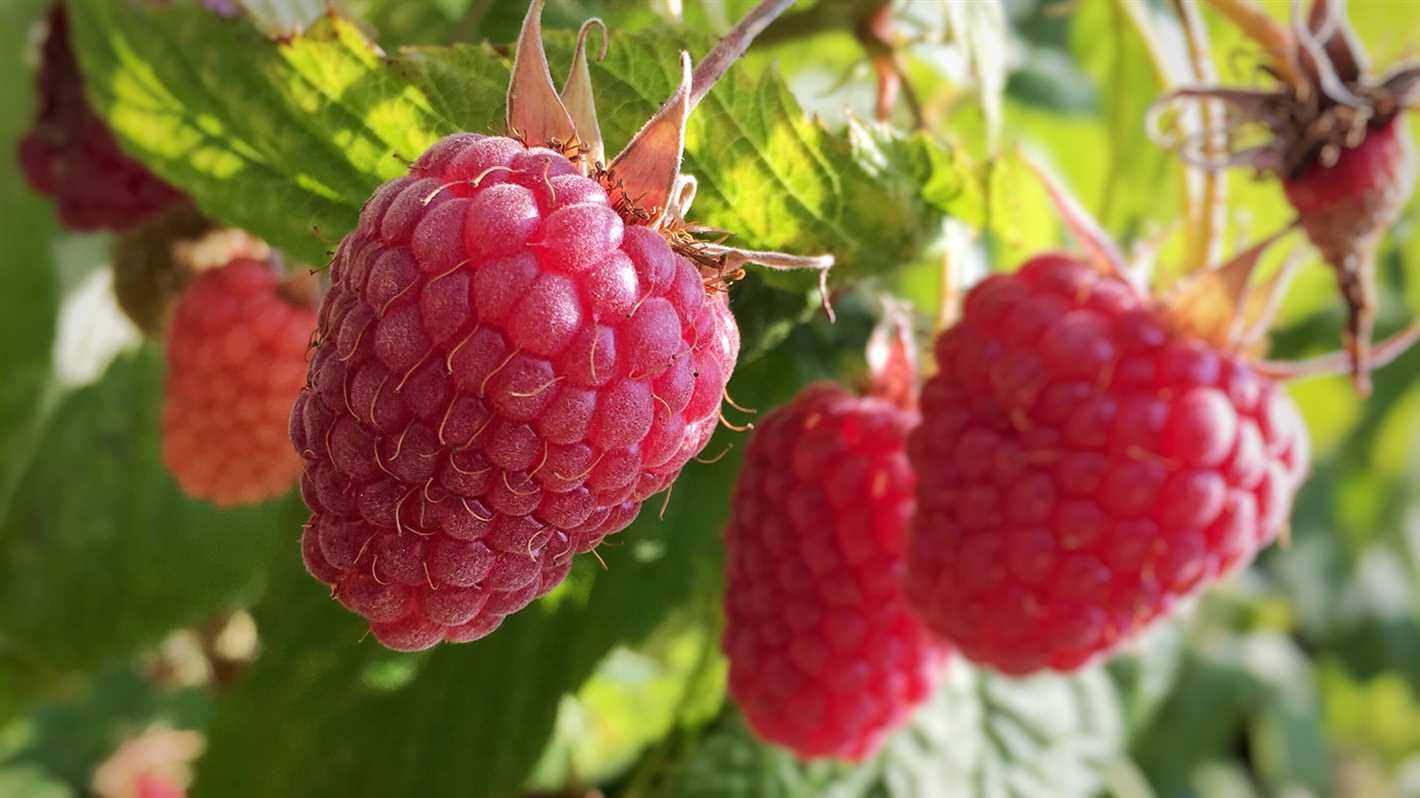
Watering is a crucial aspect of caring for raspberry plants during their fruiting season. Proper watering ensures that the plants receive adequate moisture, which is essential for their growth and fruit production. Here are some tips for watering your raspberry plants:
1. Watering frequency:
During the fruiting season, raspberry plants require regular watering to keep the soil consistently moist. Water the plants deeply once or twice a week, depending on the weather conditions and soil moisture level. Avoid overwatering, as it can lead to root rot and other diseases.
2. Watering technique:
When watering raspberry plants, it is recommended to water at the base of the plants rather than overhead. This helps prevent the foliage from getting wet, reducing the risk of fungal diseases. Use a soaker hose or drip irrigation system to deliver water directly to the roots.
3. Time of day:
Water your raspberry plants early in the morning or late in the evening. This allows the plants to absorb the water before the heat of the day evaporates it. Avoid watering during the hottest parts of the day, as the water may quickly evaporate without benefiting the plants.
4. Mulching:
Applying a layer of organic mulch around the base of raspberry plants can help retain moisture in the soil. Mulching also helps prevent weed growth, which can compete with the plants for water and nutrients. Use materials like straw, wood chips, or compost as mulch.
5. Monitoring soil moisture:
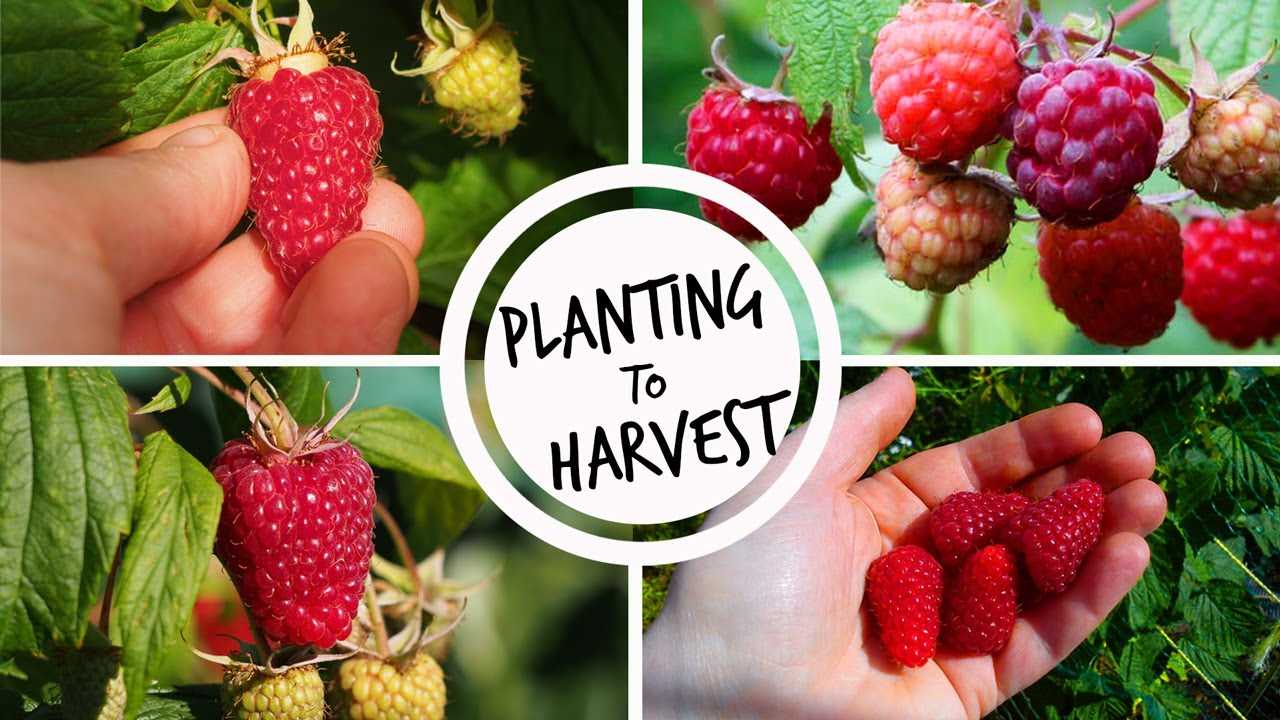
Regularly monitor the moisture level of the soil around your raspberry plants. Stick your finger or a moisture meter into the soil to check if it feels dry. If the top inch of soil is dry, it’s time to water. Be mindful not to let the soil dry out completely, as raspberries prefer consistently moist soil.
By following these tips, you can ensure that your raspberry plants receive the right amount of water for healthy growth and bountiful fruit production. Remember, proper watering is crucial for the overall success of your raspberry plants throughout the fruiting season.
Best fertilizers for raspberry bushes
To ensure healthy growth and abundant fruiting, raspberry bushes require regular fertilization. Here are some of the best fertilizers to keep your raspberry bushes thriving:
- Organic compost: Rich in nutrients, organic compost helps improve soil structure and fertility. Spread a layer of compost around the base of the raspberry bushes every spring.
- Manure: Well-aged manure is an excellent source of nitrogen and other essential nutrients. Apply a thin layer of manure around the base of the bushes, being careful not to let it touch the stems.
- Blood meal: Blood meal is a high-nitrogen fertilizer that promotes leafy growth. Sprinkle a small amount of blood meal around the raspberry bushes and lightly rake it into the soil.
- Bone meal: Bone meal is rich in phosphorus, which is important for strong root development and fruit production. Apply bone meal to the soil around the raspberry bushes in early spring.
- Fish emulsion: Fish emulsion is a liquid fertilizer that provides a balanced mix of nutrients. Dilute fish emulsion according to the instructions on the package and apply it to the soil around the raspberry bushes.
- Seaweed extract: Seaweed extract contains a range of beneficial nutrients and trace elements. Mix seaweed extract with water according to the instructions and use it to water the raspberry bushes every few weeks.
Remember to follow the instructions on the fertilizer packaging and avoid over-fertilizing, as this can lead to excessive leaf growth and reduced fruiting. Regular fertilization will help ensure that your raspberry bushes are healthy and productive.
Harvesting and storing raspberries
Once your raspberry bush is fruiting, it’s time to start harvesting the delicious berries. Here are some tips for harvesting and storing raspberries:
- Timing is key: Raspberries are at their sweetest and juiciest when they are fully ripe. Look for berries that are fully colored and easily detach from the plant with a gentle tug. Avoid picking unripe berries as they may not develop their full flavor.
- Pick regularly: Raspberries ripen at different rates, so it’s important to check your bush every few days during the harvest season. Pick the ripe berries and leave the unripe ones on the plant to continue ripening.
- Handle with care: Raspberries are delicate fruits, so handle them gently to avoid damaging them. Hold the berry at the base and gently detach it from the plant.
- Store properly: If you’re not planning to eat your raspberries right away, it’s important to store them properly to maintain their freshness. Place the unwashed berries in a shallow container lined with paper towels to absorb excess moisture. Avoid stacking the berries too high to prevent crushing.
- Refrigerate or freeze: Raspberries are perishable fruits, so it’s best to refrigerate them if you’re not using them immediately. They can stay fresh in the refrigerator for up to 2-3 days. If you have more raspberries than you can consume, you can also freeze them. Simply spread the berries in a single layer on a baking sheet and freeze them until they are firm. Then transfer the frozen berries to airtight containers or freezer bags for long-term storage.
With these tips, you can enjoy the bountiful harvest of your raspberry bush and savor the delicious taste of fresh raspberries throughout the year!
Picking ripe and sweet raspberries
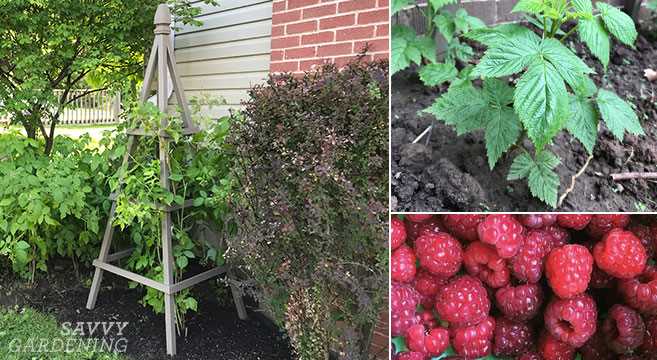
Raspberries are at their juiciest and most flavorful when they are fully ripe. Here are some tips for picking the perfect raspberries:
1. Look for vibrant color
Ripe raspberries will have a deep red or purple color. Avoid berries that are pale or have green spots, as they are not fully ripe yet.
2. Check the firmness
Gently squeeze the raspberry to check its firmness. Ripe raspberries should be plump and firm, but not too soft or mushy.
3. Give it a gentle tug
A ripe raspberry will easily detach from the stem when you give it a gentle tug. If it doesn’t come off easily, it might not be fully ripe yet.
4. Mind the weather
Pick raspberries in the morning or evening when the weather is cooler. Berries tend to be juicier and sweeter during these times of the day. Avoid picking during the heat of the day, as the berries can become overripe and mushy.
5. Pick regularly
Raspberries ripen quickly, so it’s important to check your plants regularly and pick the ripe berries. Leaving overripe berries on the bush can attract pests and diseases.
6. Use a gentle touch
Raspberries are delicate fruits, so be gentle when picking them to avoid bruising. Hold the berry gently between your thumb and forefinger, and twist it off the stem.
7. Enjoy immediately or store properly
Raspberries are best enjoyed fresh, but if you can’t eat them right away, store them in the refrigerator. Place them in a single layer on a paper towel-lined tray or container, and cover with a lid or plastic wrap. This will help them last longer.
By following these tips, you can ensure that you pick the ripest and sweetest raspberries to enjoy in your favorite recipes or simply as a healthy snack!
Question-answer:
How often should I water raspberry bushes during fruiting?
During the fruiting stage, it is important to keep the soil consistently moist. Water the raspberry bushes deeply once or twice a week, providing about 1-2 inches of water each time.
Is it necessary to fertilize raspberry bushes during the fruiting period?
Yes, it is essential to fertilize raspberry bushes during the fruiting period. Apply a balanced fertilizer in early spring and again after the first harvest. This will provide the necessary nutrients for healthy fruit production.
What should I do if my raspberry bushes have powdery mildew during fruiting?
If your raspberry bushes have powdery mildew during fruiting, it is important to take action promptly. Remove and destroy infected leaves, improve air circulation around the plants, and apply a fungicide if necessary. Regularly monitor your bushes for signs of powdery mildew and take preventive measures such as pruning and proper spacing to avoid future outbreaks.
Can I prune raspberry bushes during the fruiting season?
It is generally not recommended to prune raspberry bushes during the fruiting season. Pruning can disrupt fruit production and may result in a reduced harvest. It is best to prune raspberry bushes in late winter or early spring before new growth begins.
What are the common pests that can affect raspberry bushes during fruiting?
Common pests that can affect raspberry bushes during fruiting include aphids, spider mites, raspberry fruitworms, and Japanese beetles. Regularly inspect your bushes for signs of pest infestations and take appropriate measures such as applying organic insecticides or introducing beneficial insects to control the pests.
How long does it take for raspberries to ripen after flowering?
Raspberries typically take about 3-4 weeks to ripen after flowering. The exact time may vary depending on the raspberry variety and growing conditions. It is important to monitor the berries closely and harvest them when they are fully ripe for the best flavor and texture.
Why are my raspberry bushes not producing fruit during the fruiting season?
There could be several reasons why your raspberry bushes are not producing fruit during the fruiting season. Lack of proper pollination, inadequate sunlight, nutrient deficiencies, or improper pruning and care could be factors. It is important to assess the growing conditions and address any issues accordingly to encourage fruit production.







